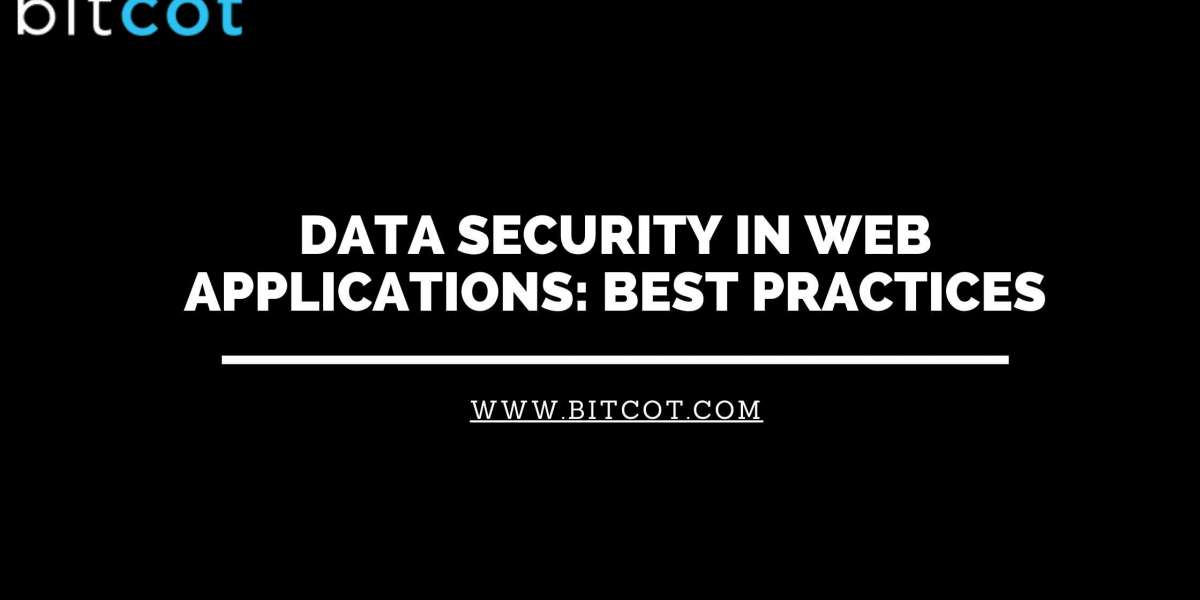Data security is a critical aspect of web application development, especially in an era where cyber threats are increasingly sophisticated and prevalent. Protecting sensitive user information and maintaining trust is paramount for businesses and developers. This blog outlines essential best practices for ensuring robust data security in web applications.
Understanding the Risks
Web applications face various security threats that can compromise user data, including:
- SQL Injection:
Attackers manipulate SQL queries to gain unauthorized access to databases.
- Cross-Site Scripting (XSS):
Malicious scripts are injected into web pages viewed by other users.
- Cross-Site Request Forgery (CSRF):
Attackers trick users into performing actions unintentionally.
- Insecure Direct Object References:
Unauthorized users access restricted resources.
Best Practices for Data Security
- Use HTTPS
Implement HTTPS (Hyper Text Transfer Protocol Secure) to encrypt data transmitted between clients and servers. This prevents interception and tampering of sensitive information during transmission.
- Input Validation and Sanitization
Validate and sanitize all input data to prevent malicious code injection attacks such as SQL injection and XSS. Use input validation libraries and frameworks to enforce strict validation rules.
- Parameterized Queries
Use parameterized queries or prepared statements when interacting with databases to prevent SQL injection attacks. Parameterized queries separate SQL code from user input, reducing the risk of malicious SQL injection.
- Least Privilege Principle
Apply the principle of least privilege to restrict access rights and permissions only to necessary resources and functionalities. Implement role-based access control (RBAC) to ensure users have minimal access based on their roles. - Secure Authentication and Authorization
- Use strong authentication mechanisms such as multi-factor authentication (MFA) to verify user identities securely.
- Implement secure session management practices, including session expiration, token-based authentication, and secure cookie attributes.
- Validate user authorization on both the front and backend to prevent unauthorized access to sensitive data and functionalities.
- Secure Password Storage
- Hash passwords using strong hashing algorithms (e.g., bcrypt, Argon2) with a salt to protect against brute-force attacks.
- Avoid storing passwords in plaintext or using weak hashing algorithms (e.g., MD5, SHA-1).
- Regular Security Audits and Penetration Testing
Conduct regular security audits and penetration testing to identify vulnerabilities and weaknesses in your web application. Address discovered issues promptly and implement security patches and updates.
- Data Encryption
- Encrypt sensitive data at rest using strong encryption algorithms (e.g., AES-256).
- Utilize encryption for data stored in databases, backups, and file systems to protect against unauthorized access.
- Secure Error Handling
Implement secure error handling to avoid leaking sensitive information in error messages. Provide generic error messages to users and log detailed error information securely for debugging purposes.
- Keep Software Dependencies Updated
Regularly update software dependencies, libraries, frameworks, and third-party components used in your web application to mitigate security vulnerabilities identified in older versions.
Compliance and Regulations
Ensure compliance with relevant data protection regulations such as GDPR, CCPA, HIPAA, and PCI-DSS. Understand and adhere to legal requirements concerning data security, privacy, and breach notification.
Conclusion
Data security is not a one-time task but an ongoing commitment to protecting sensitive information and maintaining user trust. By implementing these best practices—such as HTTPS encryption, input validation, secure authentication, and regular security audits—developers can significantly reduce the risk of data breaches and unauthorized access in web applications. Prioritize security throughout the development lifecycle, stay informed about emerging threats, and continuously update your security measures to safeguard data effectively in today's digital landscape.
Also Read: 6 Tips for Choosing the Right Web Development Company for Your Project




